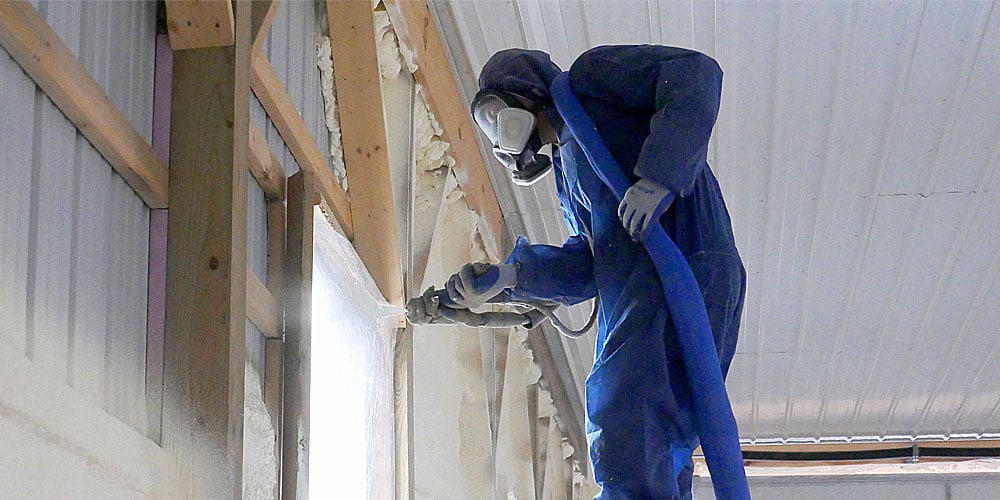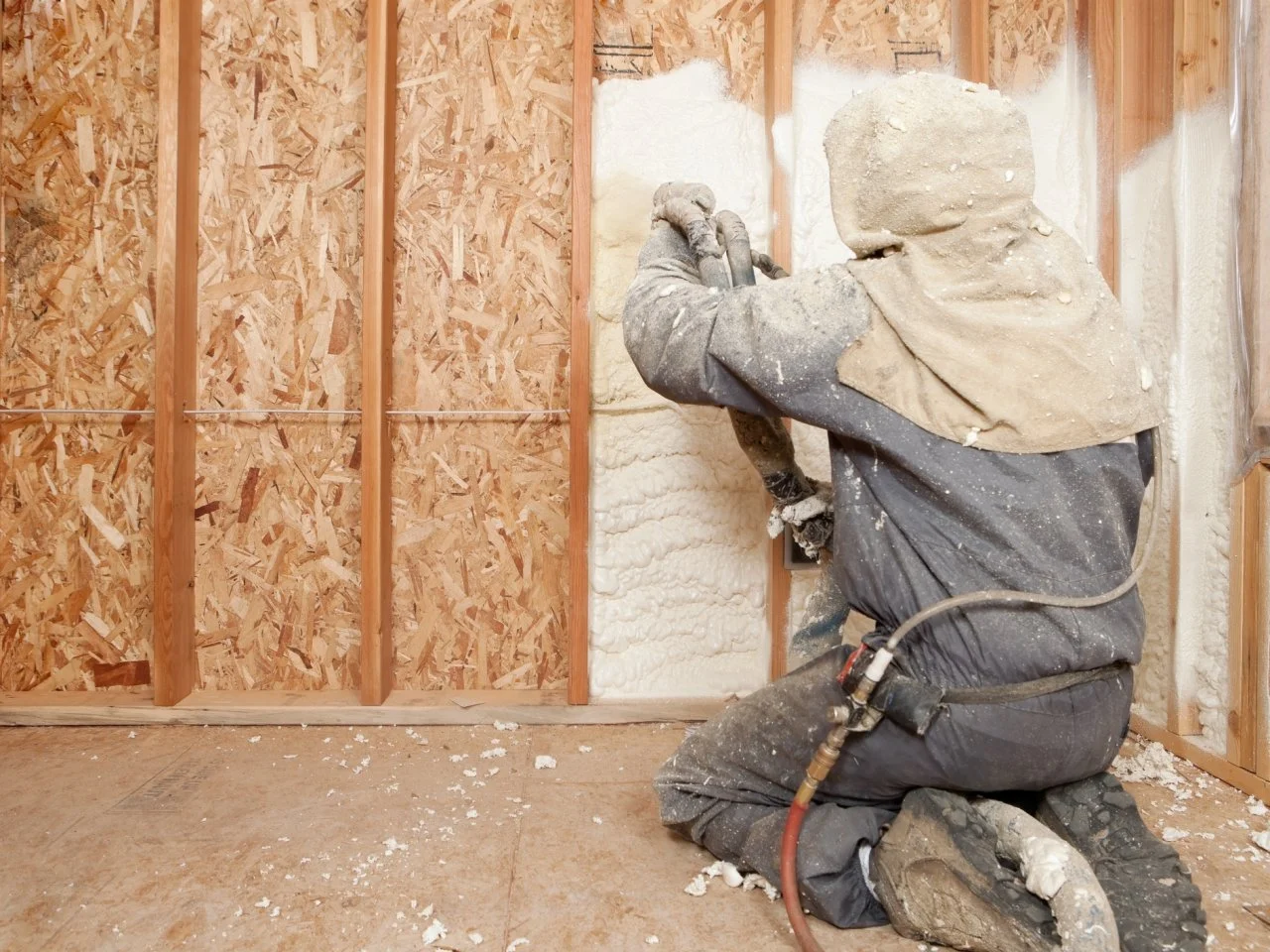The Environmental Impact of Spray Foam: Sustainability Factors To Consider
The Environmental Impact of Spray Foam: Sustainability Factors To Consider
Blog Article
Exactly How Spray Foam Can Boost Energy Effectiveness in Any Kind Of Structure
Spray foam insulation has become a pivotal option for enhancing power efficiency throughout different building types. By producing an impermeable seal that minimizes air leak, it successfully manages interior environments while significantly reducing heating and cooling expenses. Its excellent R-value and moisture-resistant residential or commercial properties add to lasting power financial savings and enhanced building durability. As homeowner significantly look for lasting services, the ramifications of spray foam insulation expand beyond simple utility savings. The full scope of its advantages, nevertheless, warrants a closer evaluation of exactly how it can change energy administration strategies in both business and property setups.
Recognizing Spray Foam Insulation
Spray foam insulation is significantly acknowledged for its superior thermal efficiency and convenience in different applications. Made up primarily of polyurethane, this insulation product is used as a liquid that increases upon get in touch with, filling spaces and producing a smooth obstacle. This distinct residential or commercial property allows spray foam to adhere to irregular surfaces, making it a perfect option for both household and industrial structures.

Application of spray foam insulation is usually carried out by qualified professionals making use of specialized tools, guaranteeing optimal efficiency and security - Spray Foam. The curing process is rapid, enabling quick installment and very little disruption. Consequently, spray foam insulation is increasingly being employed in brand-new construction and retrofitting projects because of its capability to boost architectural integrity while boosting overall power efficiency in buildings
Benefits of Power Efficiency
Energy effectiveness plays a critical function in reducing functional costs and minimizing ecological effect throughout various fields. By maximizing energy usage, homeowners and businesses can accomplish considerable cost savings on utility expenses, which straight boosts monetary efficiency. Effective power consumption suggests less reliance on fossil fuels, therefore contributing to a decrease in greenhouse gas emissions and advertising a more sustainable setting.
Moreover, energy-efficient structures frequently experience increased property values. As energy prices rise and sustainability comes to be a top priority for customers, residential properties with enhanced power effectiveness attributes are extra attractive on the marketplace. This trend encourages financial investment in energy-saving technologies, which can further drive innovation and economic growth.
In addition to financial and environmental advantages, energy performance can likewise enhance the total convenience and health and wellness of interior rooms. Correct insulation and efficient heating and air conditioning systems assist keep consistent temperature levels, decreasing drafts and humidity levels, which in turn can bring about better indoor air top quality.
Inevitably, the benefits of energy performance extend beyond immediate savings, cultivating a durable economic climate, promoting environmental stewardship, and enhancing the lifestyle for owners in any type of building.
How Spray Foam Works
Usually used as a fluid, spray foam broadens quickly upon contact with surface areas, developing a strong barrier that efficiently secures fractures and gaps. This unique property results from its chemical structure, primarily including isocyanates and polyols, which react when mixed to create a foam that fills gaps and sticks to different materials, consisting of steel, concrete, and timber.
When applied, the foam expands to numerous times its initial volume, ensuring a tight seal that avoids air leakage. This procedure substantially decreases thermal linking, which takes place when warmth transfers via materials, resulting in power loss. The foam's high R-value, an action of thermal resistance, contributes to enhanced insulation by decreasing warm transfer between the exterior and interior settings.
In addition, spray foam is resistant to wetness and parasites, further enhancing its efficacy in keeping power performance. Its application can be tailored to various areas, consisting of attics, walls, and crawl rooms, enhancing insulation across a building. Spray Foam. Overall, the innovative design and application method get redirected here of spray foam make it a reliable option for improving power efficiency in any type of structure, leading to decreased power costs and an extra sustainable developed atmosphere

Applications in Various Structures
Various applications of spray foam insulation can be located throughout different structure types, improving power efficiency and their website comfort. In residential homes, spray foam is frequently used in wall surfaces and attic rooms to create a seamless obstacle versus air leakages, dramatically lowering home heating and cooling down needs. This application is specifically useful in older homes, where conventional insulation might be insufficient.
In industrial buildings, spray foam insulation is put on roof systems and exterior wall surfaces, which aids to improve thermal performance and secure against moisture breach. Its light-weight nature makes it an optimal choice for retrofitting existing structures without adding substantial weight. Additionally, spray foam can be used in industrial settings to insulate pipelines and storage space tanks, keeping temperature control for delicate products.
Institutional structures, such as medical facilities and colleges, take advantage of spray foam insulation by making sure a regular indoor environment that sustains resident comfort and wellness. The flexibility of spray foam enables it to adapt to different structure sizes and shapes, making it a favored option for designers and building contractors seeking reliable insulation services. Generally, spray foam insulation works as an essential component in accomplishing energy-efficient structures throughout all sectors.
Long-Term Price Cost Savings
Spray foam insulation provides considerable long-lasting cost savings for structure proprietors and residents by decreasing energy usage and lowering energy costs. By providing a superior air seal, spray foam decreases the infiltration of outside air, consequently improving the thermal performance of a building. This causes much more reliable home heating and cooling down procedures, which can lead to substantial decreases in energy costs gradually.
In addition to instant cost savings on utility costs, the sturdiness and long life of spray foam insulation add to its financial benefits. Unlike typical insulation materials, which may sag, resolve, or wear away, spray foam maintains its effectiveness for years, decreasing the requirement for frequent substitutes or repairs. This long life converts to reduce upkeep costs and much less disturbance for occupants.
Additionally, structures outfitted with spray foam insulation commonly enjoy an increase in residential or commercial property worth, making them extra appealing to potential purchasers or occupants. As energy efficiency comes to be increasingly prioritized, properties with reliable insulation remedies stand out on the market. Ultimately, the combination of spray foam insulation not just improves convenience yet likewise represents a tactical financial investment that generates considerable monetary benefits over the long term.
Final Thought
To conclude, spray foam insulation acts as an essential element in enhancing energy effectiveness across diverse structure kinds. Its ability to develop a seamless barrier against air leak, combined with high R-values and moisture-resistant residential properties, substantially lowers energy usage and associated prices. The implementation of spray foam not only adds to constant interior temperature levels but additionally raises residential property value, underscoring its function as a prudent investment for both business and domestic residential or commercial properties.
Spray foam insulation has emerged as a critical remedy for enhancing energy efficiency throughout different structure kinds. Spray Foam. As an outcome, spray foam insulation is significantly being utilized in new building and retrofitting tasks due to its capacity to enhance architectural stability while improving general click reference power efficiency in structures
Overall, the ingenious design and application method of spray foam make it a reliable remedy for boosting energy effectiveness in any type of structure, leading to reduced energy costs and a much more lasting built environment.
Various applications of spray foam insulation can be located throughout various structure kinds, boosting energy performance and convenience.In final thought, spray foam insulation serves as a vital element in improving energy effectiveness throughout diverse building types.
Report this page